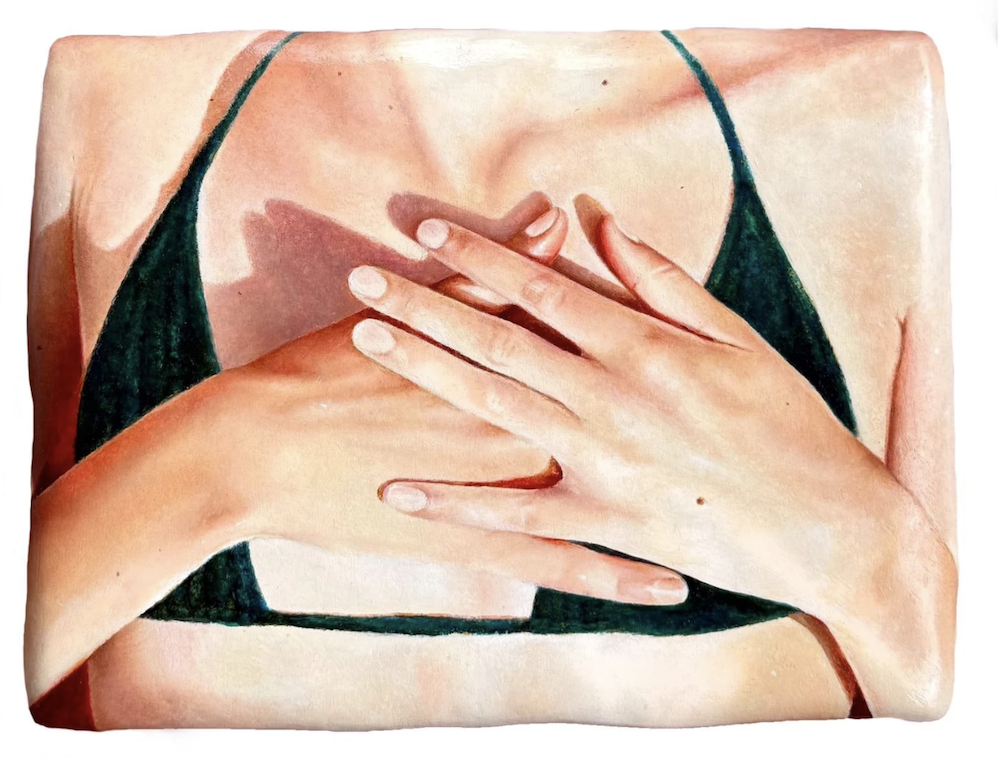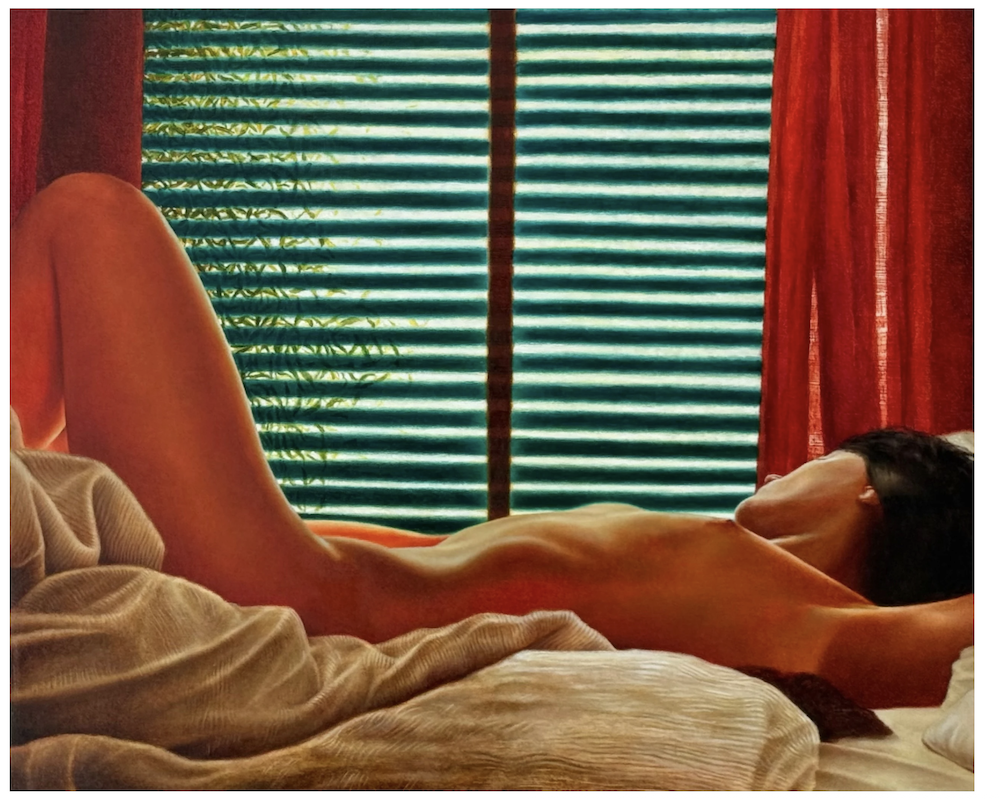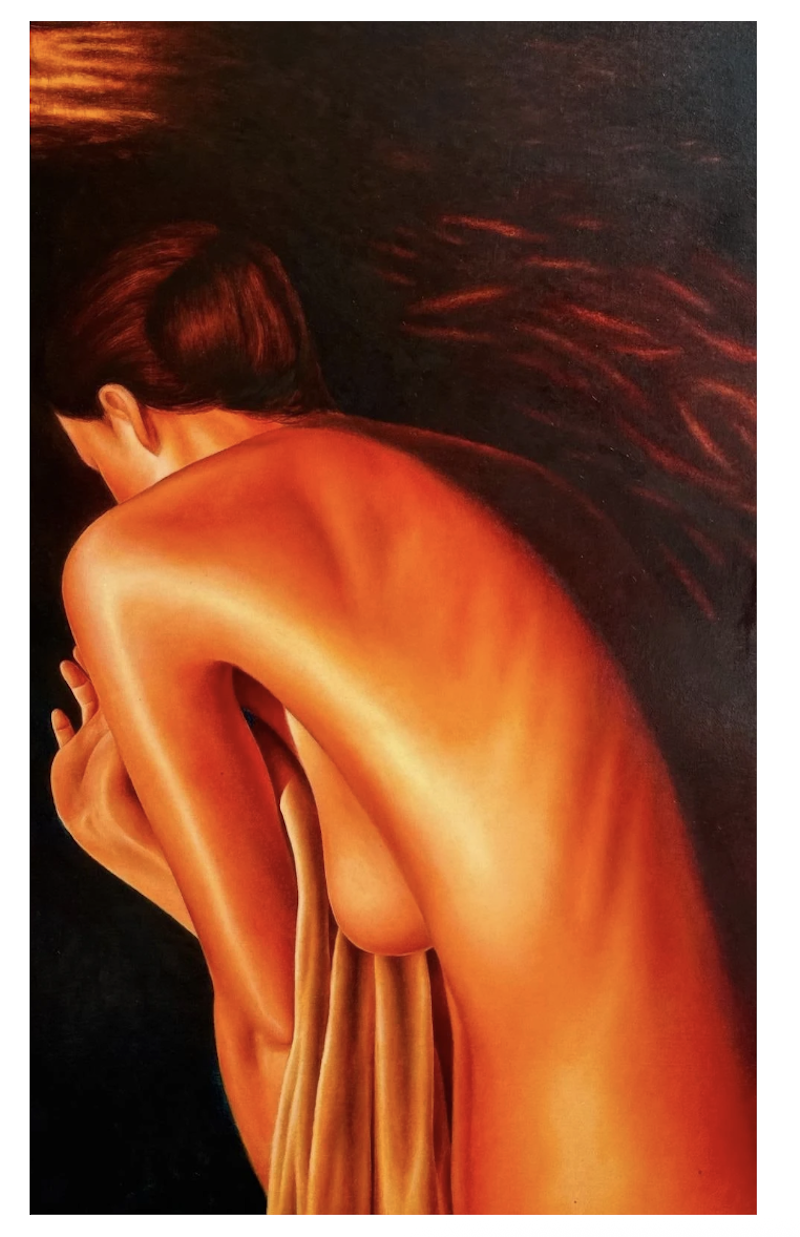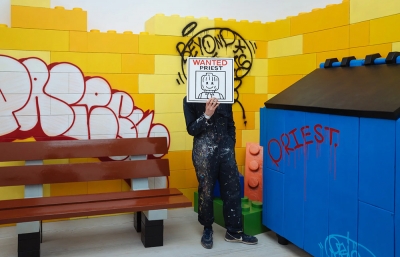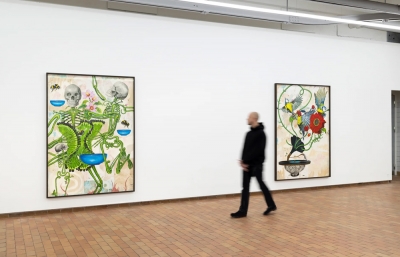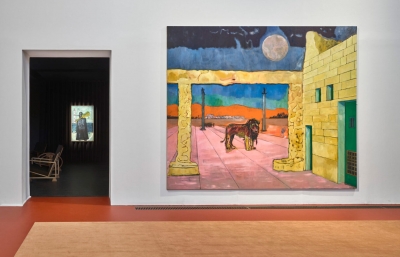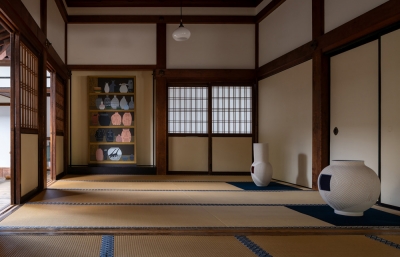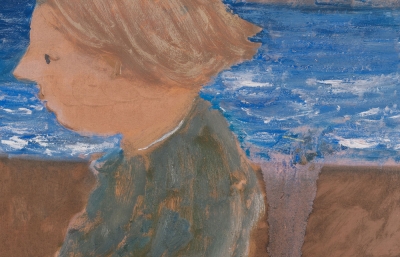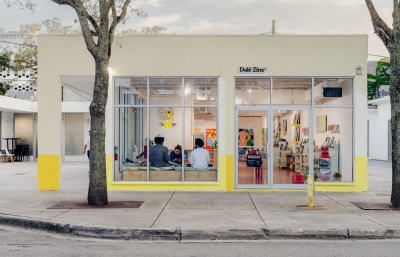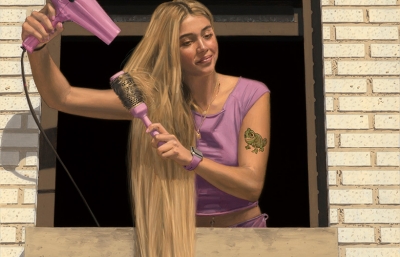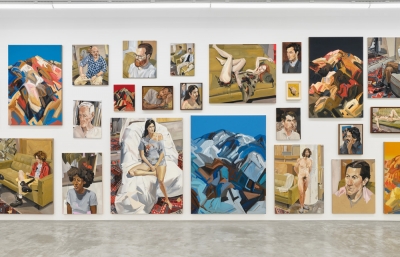Les Veilleuses is about our loved ones. In her studio, Marguerite Piard revives the memory of their presence at her side, like ‘little lights on which to rely to face the night, to grow up, to no longer be afraid’. On the canvas, friends, family and lovers mingle as witnesses to her secrets, watching over her well-being in moments of doubt. This light, dancing under the hours spent caring for each other, is reflected on their bodies, staged in intimate, abstract settings ; passing through half-open shutters, wondering if it will indeed let the darkness out.
These bodies, more than the identity of the person who inhabits them, are presented beyond the prudish barrier by Marguerite Piard. Not in passive positions, but, through the filter of her painting, in introspective spaces where the subject lets itself go, revealing itself in more vulnerable postures. Through these autobiographical representations mixed with fiction, with the desire to transform the way we look at female nude, the artist brings a more empathetic dimension to them. Addressing desire without sexualisation. Glorifying without pomp and circumstance through the prism of tenderness. Working in this way to liberate her subjects, Marguerite Piard offers herself less restraint in ever-larger formats, places of expression where she can seek herself out, no longer apologise for exploring, no longer stop herself from painting. From then on, her quest for comfort, for solitary and shared confrontations, became a mutual emancipation.
The entities depicted are guides. Alone or in pairs, they invite us to follow them, protect us from danger and surround us through the language of the hands. These hands are captured in the suspended moment of a filmed memory that Marguerite Piard freezes to better capture their essence, but whose message is tinged with this ambiguity of unveiling. We don't always know what's hidden under the eyes we close, or what is really said or not said, for our own good, in these silent scenes. By the pool, the confidences are punctuated by the lapping of the water, moments of respite and recollection, meditative time against the intensity of the rest of the world, crystallized in soothing bubbles that a fingertip would burst. As viewers, we have to resist the urge to plunge into these images that are softer than all reality, and only caress with our eyes the skin painted in successive, thin layers, whose slight transparencies due to the movement of the material give it a marbled appearance. Proof that human contact needs no words, that from our envelope alone emanates what chooses or not to reveal itself, and to whom.




